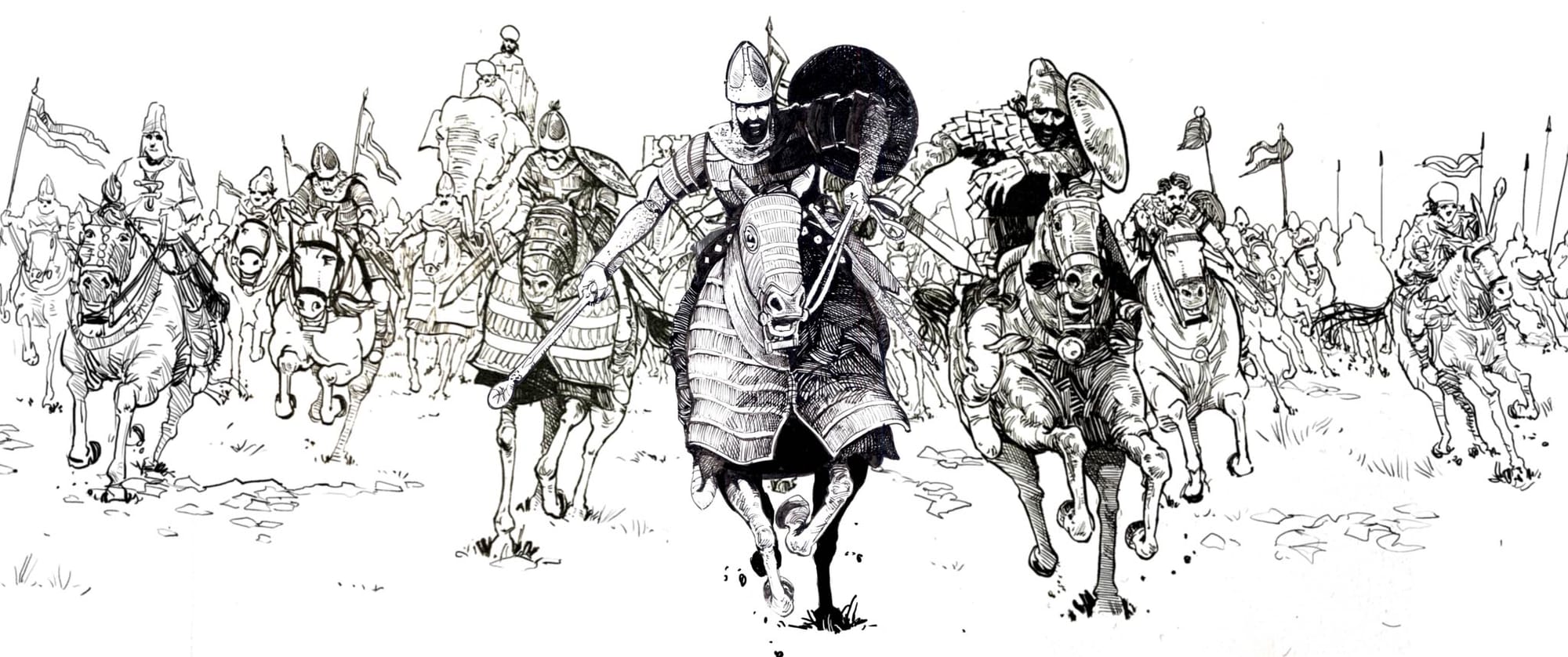Clash of Civilizations
The seventh century East was born in flames.
The region’s two leading powers, Byzantium (the Eastern Roman empire) and Sasanid Iran, began a war in 602 that would span a generation, with dire and far-reaching consequences for one another and for the world. The previous four hundred years had been characterised by halting periods of conflict and cooperation between the two, and life had carried on within this capricious struggle. Finally, however, Sasanian ruler Khosrow II sought to take advantage of Byzantine internal weaknesses by invading its territories. A vortex of violence soon overtook the region, sparing no one.
On its surface, The Standard Bearer tells the story of one such skirmish within the chaos of this pivotal war. Lasting until 628, the Byzantine-Sasanian War was marked by sieges, battles and raids across the two empires’ shared frontier. This was a diverse set of lands spanning the Taurus Mountains in arid eastern Anatolia, to the Arabian Desert in the south, across the lush Mesopotamian riverlands and into the Caucasus Mountains in the north and east. The war inflicted immense human and material suffering on either empire as trade routes collapsed, ancient cities were ruined and fertile lands choked.At the same time, it can be interpreted as the story of death’s inevitability. Or the fate of memory. I dunno. For all the research I did on the subject (which began on the presumption I’d need only to familiarise myself with superficial military details), the end result is impressionistic, rather than an effort to capture the factual. The cosmetic details of the world are important insofar as they convey the era’s appearance. At its heart, however, the Byzantine-Sasanid war was a cataclysmic event that marked the end of Antiquity, setting the stage for the Middle Ages.

Islam, after all, developed during this period, coming to full fruition as the war neared its end. Then, as the weakened empires lay heaving, the Prophet Muhammad’s armies struck from their nesting place out of the Arabian Desert. Before the century was out, the Eastern Roman Empire would experience a traumatic reduction in territory and Sasanid Iran extinguished, its state religion, Zoroastrianism, for which Iran had fought so valiantly, gradually fading from memory. Both empires had depleted themselves in a fight for survival, in the end achieving nothing. The war had been existential, with both sides regarding it as an epochal struggle between their respective conceptions of good and evil.
Is this a story, then, of human folly? Did rival empires play at possessing the favour of some cosmic engine in their bid to survive? Do these forces, if real, laugh at our efforts at immortality?
Again, I don’t know. As this piece progressed, I came to regard its principle challenge to be the capturing of all of the themes I found present in this conflict specifically, and the era more widely.